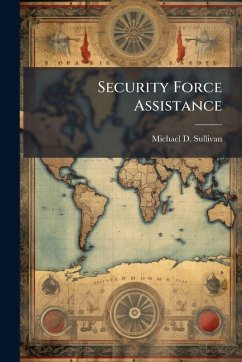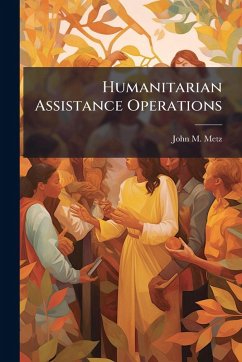
Institutionalizing Security Force Assistance
Versandkostenfrei!
Versandfertig in über 4 Wochen
15,99 €
inkl. MwSt.

PAYBACK Punkte
8 °P sammeln!
This monograph examines the role that Security Force Assistance plays in the development and execution of US foreign policy. It looks at the manner in which security assistance guidance is developed and executed. An examination of national level policy and the guidance from senior military and civilian leaders highlights the important role of Security Force Assistance. Further inquiry into the execution of Security Force Assistance reveals a discrepancy between what is necessary and what is available. With 243,000 Soldiers deployed or forward stationed in 76 countries worldwide a way to reduce...
This monograph examines the role that Security Force Assistance plays in the development and execution of US foreign policy. It looks at the manner in which security assistance guidance is developed and executed. An examination of national level policy and the guidance from senior military and civilian leaders highlights the important role of Security Force Assistance. Further inquiry into the execution of Security Force Assistance reveals a discrepancy between what is necessary and what is available. With 243,000 Soldiers deployed or forward stationed in 76 countries worldwide a way to reduce the gap is to build capabilities and capacities of allies and partners. The uniqueness of the United States and the topic hindered the use of actual case studies in this monograph, however where suitable, references and linkages to other examples of Security Force Assistance are provided. The expected generational length of the Long War, the transformation of the US Army into a future force and the desire to empower allies, partners and friends necessitate a change in the way the US Army conducts Security Force Assistance. The US Army requires an institutionalized capability to conduct Security Force Assistance beyond Special Forces and Transition Teams (TTs) in Afghanistan and Iraq. This work has been selected by scholars as being culturally important, and is part of the knowledge base of civilization as we know it. This work was reproduced from the original artifact, and remains as true to the original work as possible. Therefore, you will see the original copyright references, library stamps (as most of these works have been housed in our most important libraries around the world), and other notations in the work. This work is in the public domain in the United States of America, and possibly other nations. Within the United States, you may freely copy and distribute this work, as no entity (individual or corporate) has a copyright on the body of the work. As a reproduction of a historical artifact, this work may contain missing or blurred pages, poor pictures, errant marks, etc. Scholars believe, and we concur, that this work is important enough to be preserved, reproduced, and made generally available to the public. We appreciate your support of the preservation process, and thank you for being an important part of keeping this knowledge alive and relevant.












